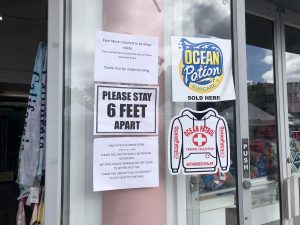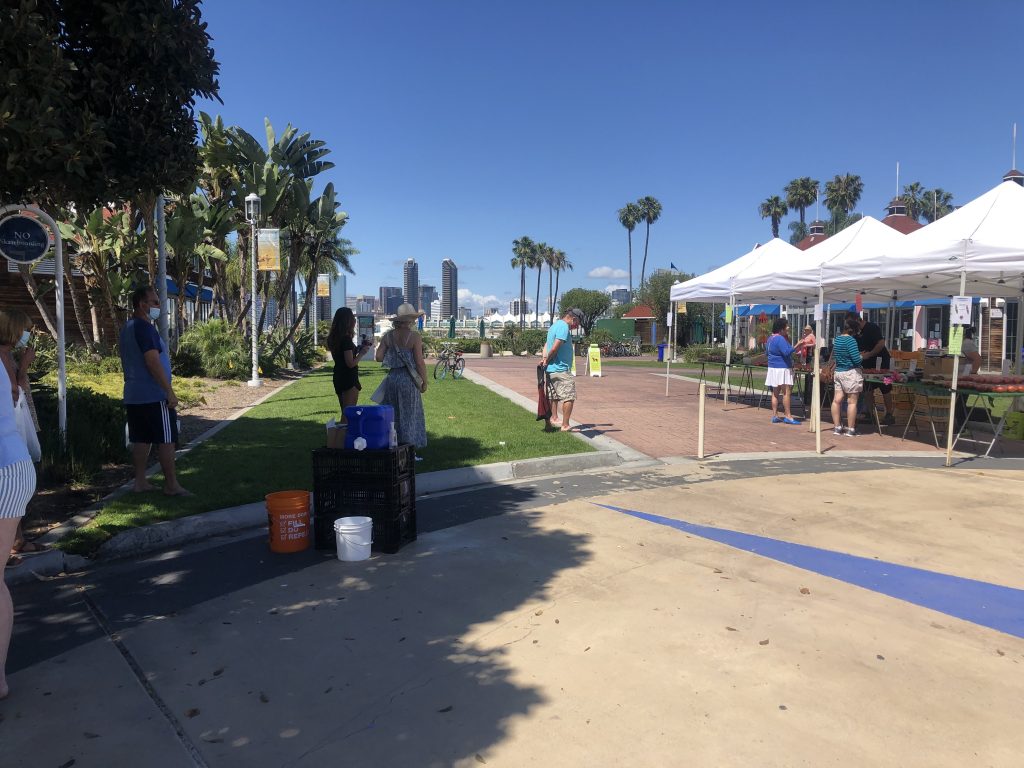Author: Julie Appleby, Kaiser Health News
As many states begin to reopen — most without meeting the thresholds recommended by the White House — a new level of COVID-19 risk analysis begins for Americans.
Should I go to the beach? What about the hair salon? A sit-down restaurant meal? Visit Mom on Mother’s Day?
States are responding to the tremendous economic cost of the pandemic and people’s pent-up desire to be “normal” again. But public health experts remain cautious. In many areas, they note, COVID cases — and deaths — are still on the rise, and some fear new surges will follow the easing of restrictions.
“Reopening is not back to normal. It is trying to find ways to allow people to get back out to do things they want to do, and business to do business,” said Dr. Marcus Plescia, chief medical officer at the Association of State and Territorial Health Officials. “We can’t pretend the virus has gone away. The vast majority of the population is still susceptible.”
So far, state rules vary. But they involve a basic theme.
“They are making assumptions that people will use common sense and good public health practice when they go out,” said Dr. Georges Benjamin, executive director with the American Public Health Association.
 As states start to reopen, people will have to weigh the risk versus benefit of getting out more, along with their own tolerance for uncertainty. The bottom line, health experts say, is people should continue to be vigilant: Maintain distance, wear masks, wash your hands — and take responsibility for your own health and that of those around you.
As states start to reopen, people will have to weigh the risk versus benefit of getting out more, along with their own tolerance for uncertainty. The bottom line, health experts say, is people should continue to be vigilant: Maintain distance, wear masks, wash your hands — and take responsibility for your own health and that of those around you.
“It’s clearly too early, in my mind, in many places to pull the stay-at-home rules,” said Benjamin. “But, to the extent that is going to happen, we have to give people advice to do it safely. No one should interpret my comments as being overly supportive of doing it, but if you’re going to do it, you have to be careful.”
An added caveat: All advice applies to people at normal risk of weathering the disease. Those 60 or older and people with underlying health conditions or compromised immune systems should continue staying home.
“Folks who are at higher risk of having a more severe reaction have to continue to be very careful and limit contact with other people,” Plescia said.
So, should I go to the beach?
There’s nothing inherently risky about the beach, said Benjamin. But, again, “if you can, avoid crowds,” he said. “Have as few people around you as possible.”
 Maintain that 6-foot distance, even in the water.
Maintain that 6-foot distance, even in the water.
“If you are standing close and interacting, there is a chance they could be sick and they may not know it and you could catch it,” Plescia said. “The whole 6-foot distance is a good thing to remember going forward.”
Still, “one thing about the beach or anywhere outside is that there is a lot of good air movement, which is very different than standing in a crowded subway car,” he said.
Even so, recent images of packed beaches and parks raise questions about whether people are able or willing to continue heeding distancing directives.
But if we’re all wearing masks, do we really need to stay 6 feet apart?
Yes, for two reasons. First, while masks can reduce the amount of droplets expelled from the mouth and nose, they aren’t perfect.
Droplets from sneezing, coughing or possibly even talking are considered the main way the coronavirus is transmitted, from landing either on another person or surface. Those who touch that surface may be at risk of infection if they then touch their face, especially the eyes or mouth. “By wearing a mask, I reduce the amount of particles I express out of my mouth,” said Benjamin. “I try to protect you from me, but it also protects me from you.”
And, second, masks don’t protect your eyes. Since the virus can enter the body through the eyes, standing further apart also reduces that risk.

Should I visit Mom on Mother’s Day?
This is a complex choice for many families. Obviously, if Mom is in a nursing home or assisted living, the answer is clearly no, as most care facilities are closed to visitors because the virus has been devastating that population.
There’s still risk beyond such venues. Data from the Centers for Disease Control and Prevention shows 8 out of 10 reported deaths from the coronavirus are among those 65 or older. Underlying conditions, such as heart or lung disease and diabetes, appear to play a role, and older adults are more likely to have such conditions.
So, what if Mom is healthy? There’s no easy answer, public health experts say, because how the virus affects any individual is unpredictable. And visitors may be infected and not know it. An estimated 25% of people show no or few symptoms.
“A virtual gathering is a much safer alternative this year,” said Benjamin.
But if your family insists on an in-person Mother’s Day after weighing Mom’s health (and Dad’s, too, if he’s there), “everyone in the family should do a health check before gathering,” he said. “No one with any COVID symptoms or a fever should participate.”
How prevalent COVID is in your region is also a consideration, experts say, as is how much contact you and your other family members have had with other people.
If you do visit Mom, wear masks and refrain from hugging, kissing or other close contact, Benjamin said.
My hair is a mess. What about going to the salon?
Again, no clear answer. As salons and barbershops reopen in some states, they are taking precautions.
States and professional associations are recommending requiring reservations, limiting the number of customers inside the shop at a given time, installing Plexiglas barriers between stations, cleaning the chairs, sinks and other surfaces often, and having stylists and customers wear masks. Ask what steps your salon is taking.
“Employees should stay home if they are sick or in contact with someone who is sick,” said Dr. Amanda Castel, professor of epidemiology at Milken Institute School of Public Health at the George Washington University. “Also, employers should make sure they don’t have everyone congregating in the kitchen or break room.”
Some salons or barbers are cutting hair outside, she noted, which may reduce the risk because of better ventilation. Salons should also keep track of the customers they see, just in case they need to contact them later, should there be a reason to suspect a client or stylist had become infected, Castel said.
Consider limiting chitchat during the cut, said Plescia, as talking in close proximity may increase your risk, although “it feels a little rude,” he admitted.
What if your stylist is coughing and sneezing?
“I would leave immediately,” he said.
What about dining at a restaurant?
Many states and the CDC have recommendations for restaurants that limit capacity — some states say 25% — in addition to setting tables well apart, using disposable menus and single-serve condiments, and requiring wait staff to wear masks.
“That’s the kind of thing that does help reduce the chance of spread of infection,” Plescia said.
If your favorite eatery is opening, call to ask what precautions are in place. Make a reservation and “be thoughtful about who you are having dinner with,” said Plescia. Household members are one thing, but “getting into closer physical contact with friends is something people should be cautious about.”
Overall, decide how comfortable you are with the concept.
“If you’re going to go to a restaurant just to sit around and worry, then you might as well do takeout,” he said.
And travel?
Consider your options and whether you really need to go, say experts.
Driving and staying in a hotel may be an option for some people.
If hotels are adequately cleaned between guests, “you could make that work,” said Plescia. Bring cleaning wipes and even your own pillows. Again, though, “if you’re going to see an elderly parent, you don’t want to contract something on the way and give it to them.”
Regarding air travel — airlines are taking steps, such as doing deep cleaning between flights. Fresh and recirculated air goes through special HEPA filters. While there is little specific research yet on the coronavirus and air travel, studies on other respiratory and infectious diseases have generally concluded the overall risk is low, except for people within two rows of the infected person. But a case involving an earlier type of coronavirus seemed to indicate wider possible spread across several rows.
Maintaining distance on the plane and in the boarding process is key.
“Wear a mask on the plane,” said Benjamin.
And plan ahead. How prevalent is the coronavirus in the areas you are traveling to and from? Are there any requirements that you self-isolate upon arrival? How will you get to and from the airport while minimizing your proximity to others?
But if it’s not essential, you might want to think twice right now.
“People who absolutely don’t have to travel should avoid doing it,” said Plescia.
Worship services are important to me. What precautions should be considered?
The distance rule applies as houses of worship consider reopening.
“As much as you can within religious rules, try to avoid contact,” said Benjamin.
He is not giving any advice on Holy Communion, saying that is up to religious leaders. But, he noted, “drinking from the same cup raises the risk if a person is sick or items are touched by anyone who is sick.”
Finally, keep in mind that much is being learned about the virus every day, from treatments to side effects to how it spreads.
“My own personal approach is, try to play it on the cautious side a bit longer,” said Plescia.
Castel agreed. “We need a little more time to fully understand how COVID-19 works and more time to ramp up our testing, find treatments and hopefully a vaccine,” she said. “We all have social distancing fatigue. But we can continue to save lives by doing this.”
This story was originally published in Kaiser Health News.
By [email protected], @Julie_Appleby




